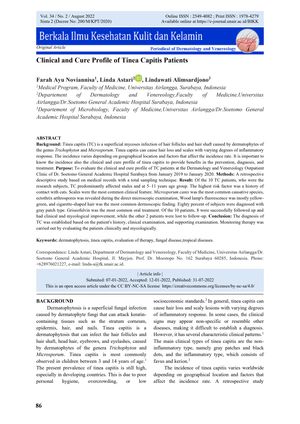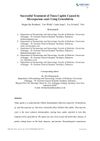Clinical and Cure Profile of Tinea Capitis Patients

TLDR Most tinea capitis patients were young boys with cat contact, had scaly patches caused by Microsporum canis, and improved with griseofulvin treatment.
The study focused on the clinical and cure profile of 10 patients with tinea capitis (TC) at Dr. Soetomo General Academic Hospital Surabaya over a one-year period. It found that TC primarily affected males (60%) and children aged 5-11 (60%), with contact with cats being a common risk factor. The predominant clinical feature was scales, and the most frequent causative agent was Microsporum canis. Eight patients had the gray patch type of TC and were treated with griseofulvin, showing clinical and mycological improvement, while 2 patients were lost to follow-up. The study highlights the importance of comprehensive diagnosis, including history, clinical examination, and supporting tests, and the necessity of monitoring therapy through clinical and mycological evaluation for effective treatment of TC.
